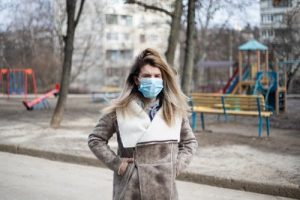
Most of us hate it when we have the unbearable symptoms of a dry throat or cough coming. We dislike the uncomfortable feeling of soreness that comes with these illnesses. That is why we try to come up with different ways, such as natural remedies (insert blog link here), to break up a cold.
What does it mean to have a dry throat or cough? 
A dry throat is a common symptom during the winter because the air is dry, and upper respiratory infections are usually spreading. On the other hand, a dry cough is a type of cough called non-productive. These coughs don’t have any phlegm or mucus because it is often caused by irritation in the throat.
Common Causes and Treatments
For a dry throat:
-
Allergies – According to Medical News Today, one of the causes of a dry throat is allergies because 30 to 40% of the world’s population have allergies in substances like mold, pollen, pet hair, and certain foods.
How to Treat It: To avoid triggering your allergies, you can stay indoors with the windows closed and the air conditioning on. You can also wash your sheets weekly in hot water and clean up mold in your house. If it is still triggered, you can take antihistamines or allergy shots.
-
Dehydration – The dryness that you’re feeling in your throat might be because you haven’t had enough water to drink, as stated by Healthline. Because you are dehydrated, there isn’t much saliva, which is responsible for moistening your mouth and throat.
How to Treat It: Drink a lot of water and extra fluids as much as you can. It is recommended that for most people, you should drink an average of 15.5 cups per day while for women, it’s 11.5 cups. Make sure to avoid soda and caffeinated drinks because it can cause the body to lose more water.
-
Common Cold – Alongside a runny nose, you can also get a dry throat with a cold. Based on the Centers for Disease Control and Prevention, on average, an adult will get at least 2 or 3 colds annually. This is because of infections caused by different viruses.
How to Treat It: There are various ways you can try drinking warm liquids such as soup with herbs and roots or herbal teas. You can use humidifiers to moisten the air in your room, or you can also try to suck on a throat lozenge. 
For a dry cough:
-
Asthma – This is a condition in the lungs where there is inflammation and narrowing of the airways. Coughing is a common symptom of asthma, and it can be productive and non-productive. There’s also what you call cough-variant asthma, which has a dry cough as its main symptom.

How to Treat It: There is currently no cure for this illness, but many treatments are focused on prevention and relieving symptoms. Most doctors prescribe inhalers or long-term medications. Again you could try lozenges, drinking lots of water, and using humidifiers.
-
Gastroesophageal reflux disease – This is also known as GERD. This is a chronic acid reflux that often triggers the cough reflex.
How to Treat It: The symptoms can be managed by making lifestyle changes like avoiding fatty or spicy foods that can worsen the symptoms, eating multiple small meals a day, and also quitting smoking.
-
Viral Infections – One example would be the common cold. You’ll usually have post-cold dry coughs that will last for at least two months. This is because of the irritation in the airways, which are very sensitive due to the viral infection.

How to Treat It: This can be treated with plenty of rest, which means sleeping at least 8 hours a day and drinking plenty of warm liquids to soothe the throat. You can try to add in ginger or lemongrass to soothe. These dry cough treatments will give the airway time to get better.
Take note of all these treatments and the causes of them. You’ll be ready as soon as you feel like you might be getting a dry throat or cough. Don’t make it worse and treat it as early as possible!




